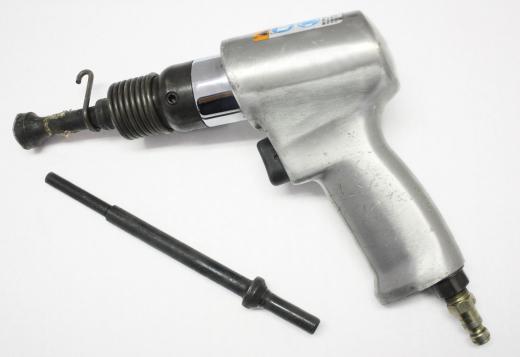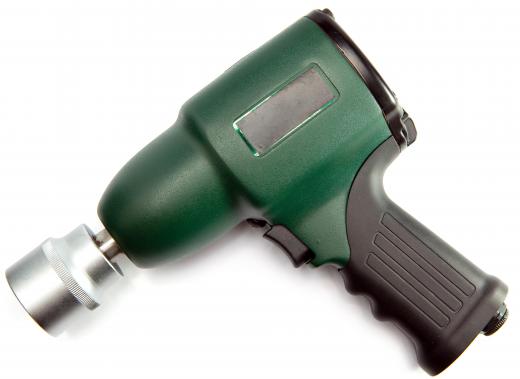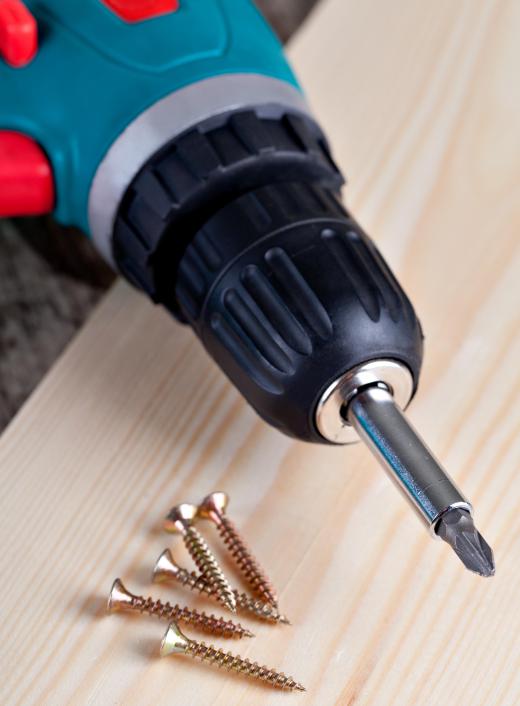Power tools have evolved from huge water- or wind-propelled grinding mills and spinning looms to devices that fit comfortably in the palm of the hand, such as power screwdrivers and palm sanders. Virtually all of today’s power tools are powered in one of two ways, either by air or by electricity. Air power tools, commonly called pneumatic tools, are rapidly gaining popularity over their electrically powered rivals, especially among homeowners and hobbyists.
The vast majority of air power tools are operated using compressed air provided by an air compressor. Most compressors are powered by electricity or gasoline. A hose leads from the compressor to the tool and provides a constant-velocity source of driving energy to the power tool. There are some air power tools that are powered by canisters of carbon dioxide (CO2) using the same operating principles as compressed air. These canister-powered tools are notable for their mobility, needing no air hose that might inhibit their operation at a considerable distance from any sort of power source.

Even ten years ago, electrical tools were the only choice for do-it-yourselfers. Since then, inexpensive air compressors, more efficient operating equipment, and lower maintenance costs have given air power tools a leg up in the handyman market. Professionals and manufacturers have used air power tools for decades, well aware of the safety and dependability of pneumatic power as opposed to electrical power. Additionally, air power tools are often lighter and less bulky than are electrical tools, resulting in less fatigue when using hand tools.

Air power tools can be used for all sorts of applications once thought to be strictly the domain of electrically powered hand tools. These applications include sanders, cutting tools, screwdrivers, chisels, staplers, saws, chippers, and hammers, among numerous other tools. Several additional powered hand tools, such as sprayers, nail guns, ratchets, and torque wrenches are far better suited to compressed air operation than to electrical power.

Air power tools are usually operated with a trigger, similar to electrical tools. The actual operating mechanisms are activated by the adjustable pressure of compressed air. Adjustment mechanisms for pneumatic pressure are usually located on the handle of the tool. Ordinarily, the adjustment mechanism will be a knob or dial, commonly incremented in pounds per square inch (psi). Air pressure can be adjusted at the air compressor as well. Electrically driven power tools are rarely adjustable, thus power output can often be either too much or too little, requiring smaller or larger tools, and the consequent inefficiency and expense.
